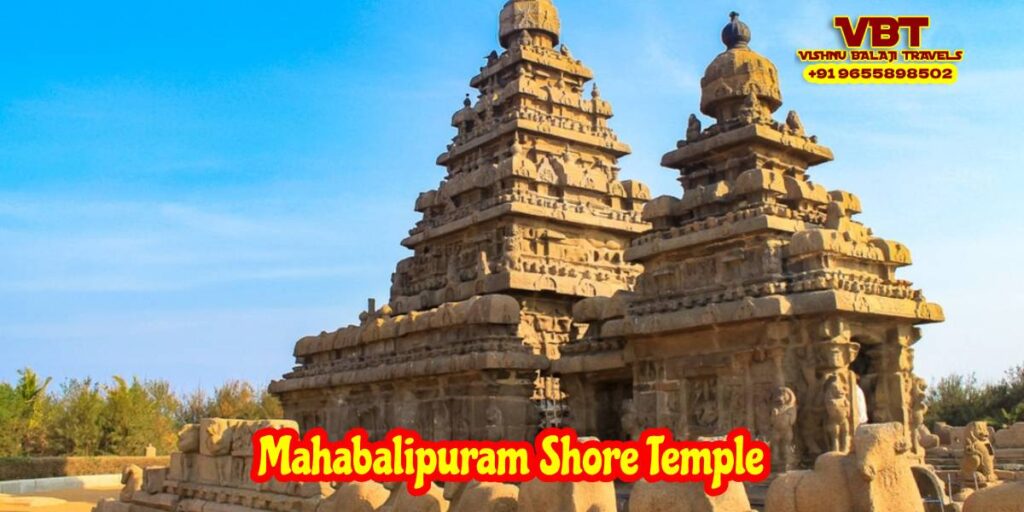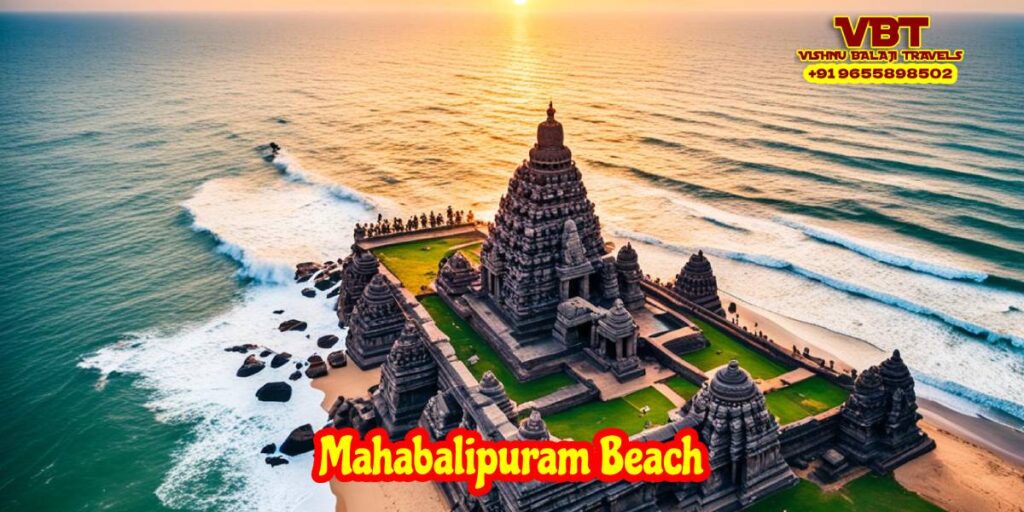Overview
The Mahishasuramardini Cave Temple is an ancient rock-cut cave temple located in Mahabalipuram, Tamil Nadu. It is a testament to the artistic and architectural brilliance of the Pallava dynasty, known for their contributions to South Indian temple architecture.
Historical Significance
- Period: 7th century CE
- Built By: The Pallava kings, particularly during the reign of Narasimhavarman I (Mamalla)
- UNESCO World Heritage Site: Part of the “Group of Monuments at Mahabalipuram”
Architecture
- Rock-Cut Structure: The temple is carved out of a single granite rock, showcasing the intricate and precise craftsmanship of Pallava artisans.
- Plan: The cave has a rectangular hall (mandapa) with columns supporting the roof. It consists of three cell-like sanctums at the back.
- Sculptures: The cave is renowned for its detailed and expressive bas-reliefs.
Mahishasuramardini Cave Temple Features
- Mahishasuramardini Panel: The main attraction is the magnificent bas-relief depicting Goddess Durga as Mahishasuramardini (the slayer of the buffalo demon Mahishasura). This panel portrays Durga riding a lion, holding various weapons, and triumphantly defeating the demon, symbolizing the victory of good over evil.
- Vishnu Panel: Another notable bas-relief depicts Lord Vishnu reclining on the serpent Ananta (Adishesha), in a serene and peaceful posture, representing cosmic rest before the creation of the universe.
- Other Figures: The cave also features other deities and mythical figures, adding to its rich iconography.
Visitor Information
- Location: Situated on a hillock in Mahabalipuram, offering panoramic views of the surrounding area, including the Bay of Bengal.
- Timings: Open to visitors from 6:00 AM to 6:00 PM every day.
- Entry Fee: The entry fee is included in the general ticket for the monuments in Mahabalipuram:
- Indians: ₹40 per person
- Foreigners: ₹600 per person
- Children (up to 15 years): Free
Famous Mahabalipuram Sightseeings
- Shore Temple: A stunning example of early Dravidian architecture, located near the coast.
- Pancha Rathas: A group of five monolithic rock-cut temples, each dedicated to different figures from the Mahabharata.
- Arjuna’s Penance: A large open-air rock relief depicting scenes from Hindu mythology.
- Krishna’s Butter Ball: A giant balancing rock, another geological wonder in Mahabalipuram.
Tips for Visitors
- Photography: Photography is allowed and highly recommended to capture the intricate details of the sculptures.
- Guided Tours: Hiring a local guide can enhance your understanding of the historical and cultural context of the cave temple.
- Best Time to Visit: Early morning or late afternoon to avoid the midday heat and enjoy better lighting for photography.
- Footwear: Comfortable footwear is advisable as the temple is located on a hillock, requiring some walking and climbing.
Summary
The Mahishasuramardini Cave Temple is a remarkable example of ancient Indian rock-cut architecture and sculpture. Its detailed carvings and historical significance make it a must-visit destination for anyone exploring Mahabalipuram, offering a glimpse into the rich cultural and religious heritage of the Pallava dynasty.


